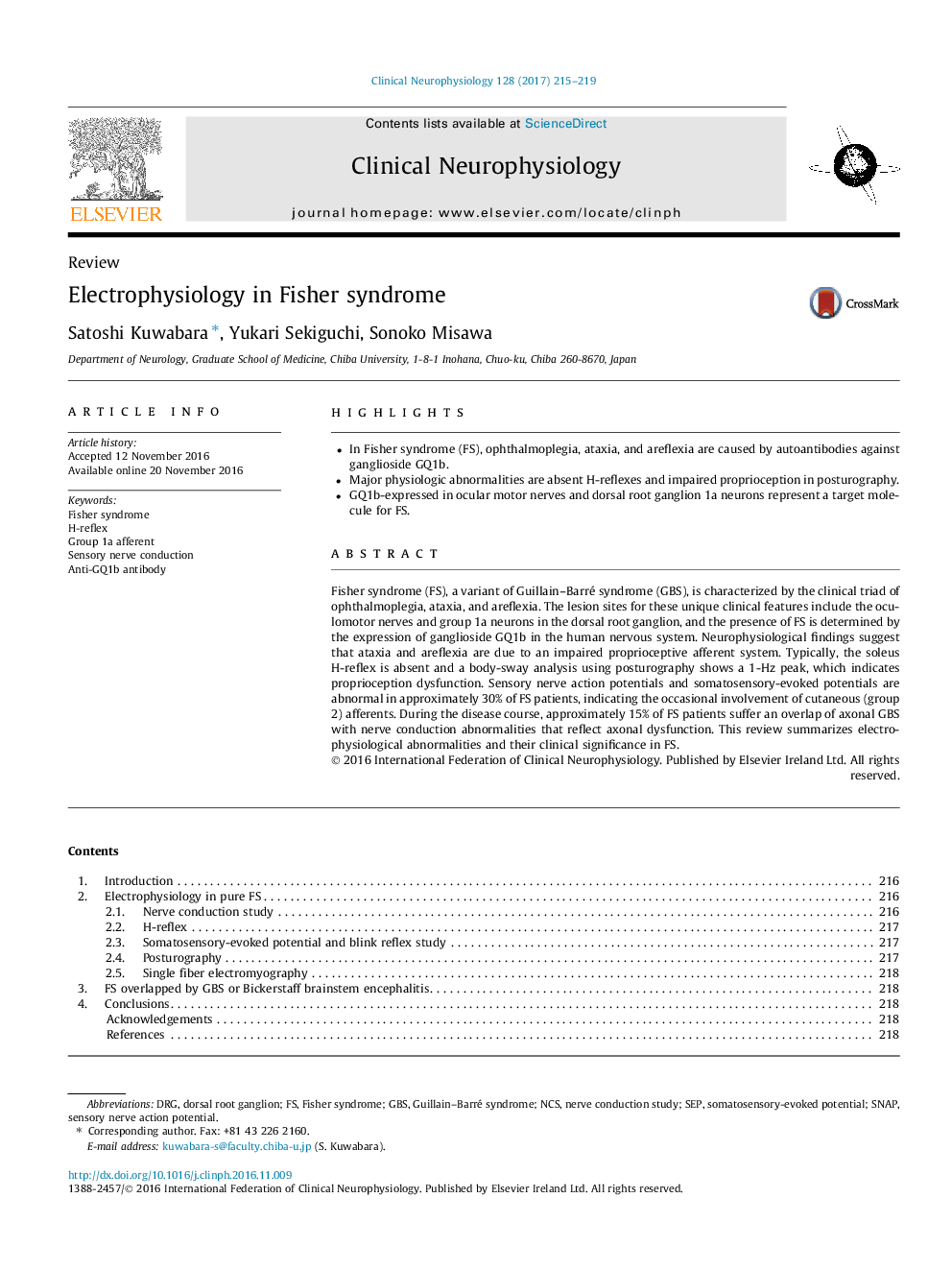| کد مقاله | کد نشریه | سال انتشار | مقاله انگلیسی | نسخه تمام متن |
|---|---|---|---|---|
| 5627434 | 1406347 | 2017 | 5 صفحه PDF | دانلود رایگان |
- In Fisher syndrome (FS), ophthalmoplegia, ataxia, and areflexia are caused by autoantibodies against ganglioside GQ1b.
- Major physiologic abnormalities are absent H-reflexes and impaired proprioception in posturography.
- GQ1b-expressed in ocular motor nerves and dorsal root ganglion 1a neurons represent a target molecule for FS.
Fisher syndrome (FS), a variant of Guillain-Barré syndrome (GBS), is characterized by the clinical triad of ophthalmoplegia, ataxia, and areflexia. The lesion sites for these unique clinical features include the oculomotor nerves and group 1a neurons in the dorsal root ganglion, and the presence of FS is determined by the expression of ganglioside GQ1b in the human nervous system. Neurophysiological findings suggest that ataxia and areflexia are due to an impaired proprioceptive afferent system. Typically, the soleus H-reflex is absent and a body-sway analysis using posturography shows a 1-Hz peak, which indicates proprioception dysfunction. Sensory nerve action potentials and somatosensory-evoked potentials are abnormal in approximately 30% of FS patients, indicating the occasional involvement of cutaneous (group 2) afferents. During the disease course, approximately 15% of FS patients suffer an overlap of axonal GBS with nerve conduction abnormalities that reflect axonal dysfunction. This review summarizes electrophysiological abnormalities and their clinical significance in FS.
Journal: Clinical Neurophysiology - Volume 128, Issue 1, January 2017, Pages 215-219
